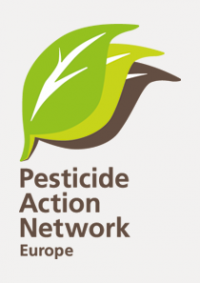EU Member States approved the renewal of 8-hydroxyquinoline (quinolin-8-ol), a pesticide classified as toxic for reproduction. The substance, known to affect healthy pregnancies and be toxic to children's development, was renewed for seven years as a candidate for substitution by using an exceptional ‘negligible exposure’ clause. Instead of banning it, Member States approved its use in permanent greenhouses for ‘drip irrigation’. PAN Europe strongly condemns this decision.
“This decision undermines the core purpose of the Pesticide Regulation, which is to protect people and the environment and remove harmful substances from the market,” said Salomé Roynel, Policy Officer at PAN Europe.
The renewal during the last Standing Committee on Plants, Animals, Food and Feed (SCoPAFF) meeting on May 14-15, was granted based on the “negligible exposure” clause of the EU Pesticide Regulation. This exceptional legal provision allows the continued use of highly hazardous substances only if it is demonstrated that the pesticide product is used in closed systems or under conditions that effectively exclude human contact (including for operators, workers, residents, and bystanders) and where residues in food are not detectable, meaning they remain below the default value of 0.01 mg/kg or the relevant Level of Quantification (LOQ).
Since the Pesticide Regulation came into force in 2011, no hazardous (‘cut-off’) substance has ever been approved under the ‘negligible exposure’ clause, due to the absence of clear guidance and robust assessment criteria. This renewal marks a dangerous first. With discussions between Member States and the Commission still ongoing over a guidance document on how to assess negligible exposure, approving 8-hydroxyquinoline now risks enshrining flawed methods and unrealistic assumptions in future pesticide approvals.
In the case of 8-hydroxyquinoline, the standard for negligible exposure was not met. The European Food Safety Authority (EFSA) highlighted major flaws and technical deficiencies in the applicant’s relevant exposure study, deeming it unreliable to draw conclusions. Nevertheless, the Commission proceeded with the proposal for its renewal, relying on unrealistic assumptions and incomplete data to justify negligible exposure. Key concerns include:
- Due to missing data for bystanders and residents (especially children), EFSA could not complete the non-dietary exposure assessment for these exposed groups.
- The assumption that the greenhouse temperature is 20°C does not reflect the actual conditions where temperatures can reach up to 40°C in southern Europe, significantly increasing the vapour pressure of the substance and emissions.
- If operators are exposed during application, for instance, due to a technical incident, EFSA concluded that negligible exposure levels would be exceeded.
Since 2022, the substance has been on PAN Europe’s Toxic 12 list for urgent ban. Following the Commission’s proposal for renewal in May 2024, PAN Europe and its member organisations have repeatedly urged the EU Member States to reject it.
“By relying on incomplete data and unrealistic assumptions, this decision threatens to undermine years of progress toward phasing out the most harmful pesticides,” concluded Salomé Roynel.
PAN Europe calls on national governments to ban products containing 8-hydroxyquinoline from their markets despite its EU renewal until 30 June 2032.
Notes for the editor:
Learn more:
- Blog - EU Pesticide meeting: Reprotoxic, Hormone-Disrupting, and Forever Pesticides
- Blog - ‘Don’t worry, you will not be exposed to this very harmful pesticide'
- Position Paper - Strengthening EU Guidance on negligible exposure to pesticides
- Campaign - Ban Toxic 12
Contact:
- Salomé Roynel, Policy Officer, salome [at] pan-europe.info, +32 451 02 31 33
- Tjerk Dalhuisen, Communications Officer, tjerk [at] pan-europe.info, +31 6 146 99 126
